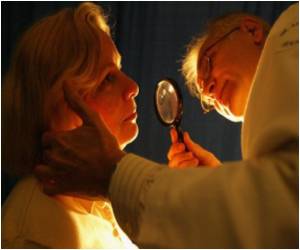Five viruses and two chemicals have been added to the list of carcinogens released by the U.S. Department of Health and Human Services.
- The U.S. Department of Health and Human Services has updated its list of carcinogens adding five viruses and two chemicals.
- While most of these are known to be carcinogenic in humans, cobalt and cobalt compounds that release cobalt ions in vivo is “reasonably anticipated to be a human carcinogen.”
- However, exposure to these carcinogens does not mean that the person will definitely suffer from cancer.
Human Immunodeficiency Virus Type 1 (HIV-1): The HIV-1 virus that causes AIDS reduces immunity. It makes the patient susceptible to infections, which can be serious enough to cause death. In addition, the patient has to deal with increased chances of developing cancers. Different types of cancers that are often noted in patients with AIDS include:
- The blood cancers non-Hodgkin’s and Hodgkin’s lymphomas
- Anal cancers
- Genital cancers like penile cancers in males and vaginal/vulvar and cervical cancers in females
- Kaposi sarcoma which causes oral and mucous membrane lesions
- Non-melanoma skin cancer
- Eye cancer
- Possibly oral-related cancers, liver and lung cancer
Epstein-Barr Virus (EBV): The EBV commonly causes a condition called infectious mononucleosis or glandular fever with symptoms similar to those of flu-like fever, sore throat and swollen lymph nodes. The condition is common in teenagers and is usually not associated with any complications. However, in very rare, it can cause cancers which include:
- Lymphomas or blood cancers like Burkitt lymphoma, Hodgkin’s lymphoma, immune-suppression-related non-Hodgkin’s lymphoma, and nasal type extranodal NK/T-cell lymphoma
- Other cancers like throat (nasopharyngeal) cancer and some types of stomach cancer
Merkel Cell Polyomavirus (MCV): MCV is a common virus found on the skin and is usually harmless. However, there have been cases when the virus has caused a type of skin cancer called Merkel cell carcinoma. Merkel cell carcinoma is a highly aggressive type of skin cancer that appears as a flesh-colored or a bluish colored nodule. It spreads fast to deeper organs and can even be fatal.
Other additions to the list include:
Trichloroethylene (TCE): Trichloroethylene (TCE) is a chemical used as an industrial solvent. It has been associated with kidney cancer, due to which it has made up to the list of carcinogens.
By including these viruses and substances on the list of carcinogens, people can be warned about the possibility of cancer on exposure to them, and can take adequate precautions to prevent exposure or get themselves regularly screened for the appearance of cancer. However, it must be remembered that infection caused by these viruses or exposure to the chemicals does not definitely mean that every person exposed to them will suffer from cancer. In fact, the chances of cancer even in those exposed are very low. Also, the list is primarily applicable for those in the United States.
- What is the Report on Carcinogens? - (https://www.nih.gov/news-events/news-releases/seven-substances-added-14th-report-carcinogens)
- Seven substances added to 14th Report on Carcinogens - (http://www.niehs.nih.gov/health/materials/report_on_carcinogens_14th_edition_the_508.pdf)
















